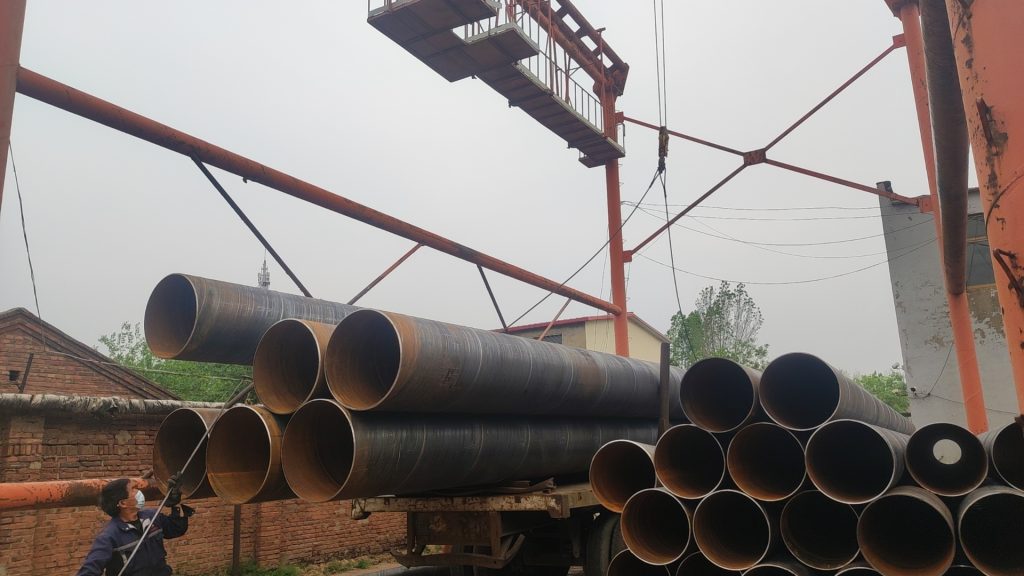1) Preparation Phase: Before construction, ensure sample piles align with the design drawing. Use one-point lashing to hoist spiral pipe piles, aligning them accurately with pre-released pile positions for verticality.
2) Gradual Commencement: Begin pile driving with slow, intermittent hammering until reaching a certain depth, adjusting verticality as necessary.
3) Continuous Monitoring: After driving 1 to 2 meters, recalibrate verticality. Continue driving until the hammering stops 60cm to 80cm above the water surface.
4) Adjustment Protocol: If tilting occurs (>1/100L L-steel pile length), promptly make adjustments or reposition piles.
5) Depth Standardization: Ensure spiral pipe piles are buried to a depth of 10m across the riverbed, sinking no more than 5mm per minute.

1) Welding Process: Connect pile bodies using butt welding on the top and bottom. Before welding, repair any damaged parts and clean surfaces thoroughly.
2) Gap Calibration: Polish welding joints to create a gap of 2 to 4 mm. Employ multi-layer welding, removing slag and visually inspecting between layers.
3) Reinforcement: Strengthen connections with staggered welding and added welding blocks.
4) Cooling Requirement: Allow a minimum cooling period of 5 minutes after welding before proceeding with piling.
1) Post-Construction Steps: Once pile construction is complete, fill sand into the pile up to the top. Weld a pile cover onto the top and attach 8 to 12 20mm anchoring steel bars on the outer wall to enhance stability.
Cangzhou DoubleDragon Steel Pipe Co., Ltd specializes in producing spiral welded steel pipes, including spiral steel pipe piles. With 30 years of experience, we offer diameters from 8 to 140 inches and wall thicknesses from 6 to 26mm. Friends worldwide are welcome to exchange and consult.
You must be logged in to post a comment.

